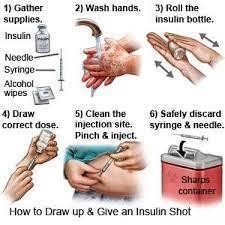A client who is one day postpartum tells the nurse that her baby cannot latch onto the breast.
The nurse determines that the client's nipples are inverted. Which action should the nurse implement?
Encourage the use of ice on the areola.
Teach about the use of a breast pump.
Offer supplemental formula feedings.
Recommend using a breast shield.
The Correct Answer is B
The correct answer is Choice B.
Choice A rationale: Ice application induces vasoconstriction, which reduces swelling but does not evert inverted nipples. This action does not address the primary issue of nipple inversion preventing adequate latch.
Choice B rationale: Breast pump use creates negative pressure, drawing out the nipple. This eversion facilitates latching by providing a more prominent nipple for the infant's oral cavity to grasp effectively.
Choice C rationale: Supplemental formula feedings provide nutrition, but do not resolve the latching difficulty caused by inverted nipples. This can interfere with the establishment of the mother's milk supply.
Choice D rationale: Breast shields can aid latching, but they are most effective when used in conjunction with nipple eversion techniques. They do not directly address the underlying problem of inverted nipples.
Nursing Test Bank
Naxlex Comprehensive Predictor Exams
Related Questions
Correct Answer is A
Explanation
To monitor for adverse effects from prasugrel, a platelet inhibitor, the nurse should prioritize assessing for bleeding or abnormal bleeding tendencies. Therefore, observing the color of urine is the most important assessment among the options provided.
Changes in urine color, such as the presence of blood or dark-colored urine, can indicate internal bleeding or bleeding in the urinary tract, which can be a potential adverse effect of platelet inhibitors. It is crucial to monitor for signs of bleeding to ensure the client's safety and intervene promptly if necessary.
Correct Answer is ["A","B","D","E"]
Explanation
A) Correct - Demonstrating the technique used to monitor blood glucose levels is crucial.
Incorrect technique can lead to inaccurate readings, impacting insulin dosing decisions and blood sugar control.
B) Correct - Some asthma medications, like corticosteroids, can elevate blood glucose levels.
Evaluating the client's asthma medications is essential as they can contribute to fluctuations in blood sugar levels.
C) Incorrect- Asking the client if they want a different manufacturer's glucose monitoring device is not helpful, because it does not address the underlying causes of the poor glycemic control. The client may also perceive this as a lack of confidence in their ability to manage their diabetes or as a criticism of their choice of device. The nurse should focus on educating the client on how to use their current device correctly and consistently, rather than suggesting a change that may not be necessary or feasible.
D) Correct - Understanding the client's daily routine helps identify factors influencing blood glucose control, such as meal timing, activity level, and stress. This information aids in creating a personalized diabetes management plan.
E) Correct - Ensuring the client uses a new insulin needle for each administration is important for preventing infection and complications. Reusing needles can affect injection site health and insulin absorption.

Whether you are a student looking to ace your exams or a practicing nurse seeking to enhance your expertise , our nursing education contents will empower you with the confidence and competence to make a difference in the lives of patients and become a respected leader in the healthcare field.
Visit Naxlex, invest in your future and unlock endless possibilities with our unparalleled nursing education contents today
Report Wrong Answer on the Current Question
Do you disagree with the answer? If yes, what is your expected answer? Explain.
Kindly be descriptive with the issue you are facing.
